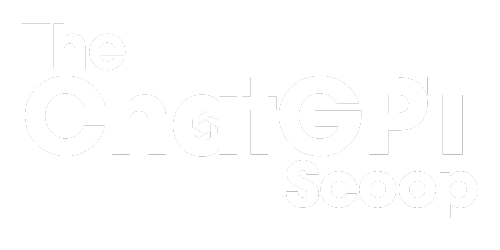Types of Prompts
Prompts play a crucial role in various aspects of our lives. Whether you’re a writer looking for inspiration, a student trying to tackle an essay, or a blogger seeking engagement, prompts are a valuable tool. In this article, we will explore different types of prompts and how they can be effectively used.
Key Takeaways:
- Prompts serve as creative catalysts and can be used in different contexts.
- There are various types of prompts that offer specific directions for generating ideas.
- The choice of prompt depends on the desired outcome and the target audience.
- Prompts can be customized to suit individual needs and preferences.
The Importance of Prompts
Prompts act as a spark to ignite your creativity and assist in overcoming writer’s block. They provide a starting point, prompting you to brainstorm ideas, generate content, and explore new perspectives. Whether you’re writing fiction, non-fiction, or actively engaging with your readers, prompts can offer structure and direction in your writing process.
**Different types of prompts** cater to various purposes and may vary in complexity and specificity. Some prompts aim to elicit personal narratives, while others are designed to encourage critical thinking or inspire imaginative storytelling. By utilizing different prompt types, you can effectively target your desired outcome and engage your intended audience.
Types of Prompts
**1. Personal Prompts**
Personal prompts are ideal for self-reflection, journaling, or gaining insights into your own experiences. These prompts encourage introspection and help you explore your emotions, values, and personal growth. They can focus on specific events, memories, challenges, or dreams. Try reflecting on “Describe a difficult decision you had to make and how it impacted your life” or “Write about a person who has had a profound influence on your life and explain why.”
*Personal prompts offer a unique opportunity for self-expression and can potentially lead to valuable personal discoveries.
**2. Academic Prompts**
Academic prompts are widely used in educational settings to stimulate critical thinking and develop writing skills. These prompts often require research, evidence-based arguments, and analysis. They can be used for essays, research papers, or classroom discussions. Examples include “Analyze the impact of climate change on global ecosystems” or “Discuss the pros and cons of renewable energy sources.”
*Academic prompts challenge you to think critically and sharpen your analytical abilities.
| Prompt Type | Description | Usage |
|---|---|---|
| Argumentative | Prompt requiring arguments supported by evidence. | Debate, essays |
| Expository | Prompt that focuses on explaining a topic or a concept. | Research papers, reports |
| Compare and Contrast | Prompt asking for similarities and differences between two subjects. | Essays, analysis |
**3. Creative Prompts**
Creative prompts inspire imaginative thinking and can be used for various forms of artistic expression. They stimulate storytelling, spark ideas for writing poems, short stories, or even developing fictional characters. Examples of creative prompts include “Write a poem about a stormy night” or “Imagine you wake up in a world where gravity doesn’t exist.”
*Creative prompts encourage you to think outside the box and explore your artistic potential.
Customizing Prompts
Is there a specific area you want to focus on or a particular writing style you prefer? Customizing prompts to meet your specific needs can be an effective approach. By tailoring prompts to align with your interests, expertise, or areas of improvement, you can engage with the prompt more meaningfully and produce content that reflects your unique perspective.
- Consider the purpose of the writing – informative, persuasive, narrative, etc.
- Identify key focus areas or genres that align with your interests.
- Modify existing prompts or create your own to suit your writing style and preferences.
Wrap Up
Prompts are versatile tools that offer valuable support in different aspects of writing and self-expression. By incorporating different types of prompts, you can overcome creative blocks, generate new ideas, and produce engaging content.
So, next time you need inspiration or want to challenge yourself, explore the diverse world of prompts and find the type that motivates you the most. Happy writing!

Common Misconceptions
Paragraph 1
One common misconception about types of prompts is that they are all the same. However, there are various types of prompts that serve different purposes and require different approaches. Understanding the different types of prompts can greatly improve one’s communication skills.
- Prompts can be open-ended or closed-ended.
- Some prompts may require creative thinking while others demand specific information.
- Different prompts may be used in different fields, such as academic writing or job interviews.
Paragraph 2
Another misconception is that prompts are always provided in written form. While written prompts are common, there are other forms of prompts as well. Verbal prompts, visual prompts, and even non-verbal cues can also serve as prompts. Recognizing these various forms of prompts is important for effective communication.
- Verbal prompts can include questions or instructions given orally.
- Visual prompts can be images, graphs, or diagrams that provide information or context.
- Non-verbal cues like gestures or facial expressions can prompt certain responses.
Paragraph 3
Some people mistakenly believe that all prompts are meant to guide a person to a specific answer or conclusion. However, not all prompts are directive in nature. Some prompts are designed to encourage critical thinking and exploration of different perspectives. Understanding the purpose of a prompt is crucial in interpreting and responding to it effectively.
- Some prompts are meant to stimulate discussion and foster creativity.
- Other prompts may be used to provoke thought and reflection.
- Prompts can also be used to facilitate problem-solving or decision-making processes.
Paragraph 4
There is a misconception that prompts are only used in formal settings, such as classrooms or professional environments. However, prompts can be found in various informal situations as well. Everyday conversations, online discussions, and even casual interactions can involve prompts that elicit a response or spark a discussion.
- Informal prompts can be found in social media posts, comments, or chats.
- Casual prompts may arise during group activities or personal conversations.
- Prompts can be used to initiate storytelling or sharing personal experiences.
Paragraph 5
Sometimes, people mistakenly assume that prompts have a single correct answer. However, prompts can often be open to interpretation and multiple valid responses. The purpose of a prompt is often to encourage critical thinking and individual perspectives, rather than seeking a definite answer. Embracing this idea can lead to more diverse and insightful discussions.
- Prompts may have subjective elements that allow for multiple perspectives.
- Valid responses can vary depending on context, personal experiences, or cultural background.
- Prompts can encourage creative problem-solving and innovative ideas.

Example 1: Popular Types of Prompts for Creative Writing
When it comes to creative writing, various types of prompts can help spark imagination and generate fascinating stories. Below, we explore some of the most widely used prompts that writers find intriguing and inspiring:
| Prompt Type | Description |
|---|---|
| Visual Prompts | Using captivating images or artwork to stimulate ideas. |
| Character Prompts | Providing detailed descriptions or profiles of fictional characters. |
| Dialogue Prompts | Presenting engaging conversations or snippets of dialogue. |
| Setting Prompts | Describing intriguing locations or environments for stories. |
| Question Prompts | Asking thought-provoking questions to inspire new ideas. |
| Genre Prompts | Assigning specific genres for writers to explore and expand upon. |
| Quote Prompts | Using compelling quotes as a starting point for writing. |
| Time Prompts | Exploring specific time periods or alternate eras for stories. |
| Music Prompts | Providing songs or music tracks to inspire creative storytelling. |
| Poetry Prompts | Giving poetic prompts to encourage expressive writing. |
Example 2: Impact of Different Prompts on Idea Generation
Choosing the right prompt can significantly influence the quality and diversity of ideas generated by writers. In this table, we examine the impact of different prompt types on idea generation:
| Prompt Type | Effect on Idea Generation |
|---|---|
| Open-ended Prompts | Encourages broad thinking and exploration of various possibilities. |
| Narrow-focused Prompts | Leads to more focused and detailed ideas within specific parameters. |
| Visual Prompts | Stimulates imaginative visualizations, resulting in vivid and descriptive ideas. |
| Abstract Prompts | Triggers unconventional thinking and the development of unique concepts. |
| Concrete Prompts | Facilitates practical ideas and allows for straightforward execution. |
| Collaborative Prompts | Promotes idea generation through teamwork, fostering diverse perspectives. |
| Controversial Prompts | Generates ideas that challenge norms, sparking critical thinking. |
| Nostalgic Prompts | Elicits ideas rooted in personal experiences and emotional connections. |
| Contradictory Prompts | Encourages exploration of contradictory ideas and unique juxtapositions. |
| Abstract Concrete Prompts | Blends abstract concepts with tangible elements for innovative ideas. |
Example 3: Prompts Based on Literary Elements
Incorporating different literary elements can add depth and complexity to writing prompts. Here are some examples of prompts that focus on specific literary elements:
| Literary Element | Prompt Example |
|---|---|
| Suspense | “Craft a story where the protagonist is trapped in an abandoned mansion with a mysterious ticking clock.” |
| Irony | “Write a scene where a celebrated detective fails to solve a simple crime committed by a mischievous child.” |
| Symbolism | “Create a poem using the symbol of a broken mirror to represent shattered dreams.” |
| Metaphor | “Describe a thunderstorm using metaphors to evoke emotions and sensations.” |
| Foreshadowing | “Craft an opening paragraph that subtly hints at a tragic event yet to unfold.” |
| Personification | “Write a short story where a tree narrates its experiences as seasons pass by.” |
| Alliteration | “Compose a tongue-twisting poem focusing on the sound of crashing waves and chirping birds.” |
| Imagery | “Describe a mountain sunrise using rich sensory details that transport readers to the setting.” |
| Parallelism | “Create a dialogue between two characters that utilizes parallel sentence structure for emphasis.” |
| Onomatopoeia | “Craft a story where onomatopoeic words dominate the narrative, immersing readers in the soundscape.” |
Example 4: Prompts for Interactive Fiction
Interactive fiction allows readers to participate in the story’s development by making choices. The prompts provided in this table are perfect for crafting interactive fiction narratives:
| Prompt | Choice 1 | Choice 2 |
|---|---|---|
| The protagonist encounters a locked door. What should they do? | Look for a key in a nearby drawer. | Force the door open with your shoulder. |
| The protagonist spots a suspicious character following them. How do they react? | Quickly hide in a nearby alleyway. | Confront the person and demand answers. |
| The protagonist stumbles upon an ancient artifact. What do they do with it? | Keep it hidden and continue exploring. | Activate the artifact and see what happens. |
| The protagonist is faced with a riddle. How do they proceed? | Attempt to solve the riddle using logical deduction. | Consult a friend or ally for assistance. |
| The protagonist reaches a fork in the road. What path do they choose? | Take the well-trodden path leading to a bustling city. | Venture into the dense forest shrouded in mystery. |
| The protagonist discovers a time-travel device. How do they test it? | Travel back a day to remedy a previous mistake. | Jump forward in time to witness a significant event. |
Example 5: Prompts for Science Fiction
Science fiction prompts offer opportunities to explore futuristic concepts and push the boundaries of imagination. Consider the following engaging science fiction prompts:
| Prompt | Scenario |
|---|---|
| “In a society where emotions are strictly regulated, a forbidden feeling begins to spread like a wildfire.” | In a technologically advanced future, humanity has developed control implants that suppress emotions to maintain social order. However, an underground resistance secretly implants devices that restore the ability to feel, setting off a chain reaction of rebellion and self-discovery. |
| “The discovery of an ancient alien artifact unveils a gateway to parallel universes.” | A team of scientists stumbles upon a cryptic alien device hidden within a hidden temple. When activated, it transports them to parallel universes, each with its unique laws of physics and societies. As they journey through these dimensions, they uncover astonishing truths about the multiverse and the nature of reality itself. |
| “In a post-apocalyptic wasteland, tribes battle for control over dwindling resources.” | Centuries after a cataclysmic event, humanity struggles to survive in a world marred by ruins and scarcity. Fierce tribes arise and clash, each possessing distinct beliefs and methods for survival. Amid this conflict, a group of individuals from different tribes forms an unlikely alliance to find a way to restore balance and rebuild society. |
| “On a distant planet, a new form of intelligent life emerges, challenging human supremacy.” | In the far reaches of space, humans have established a thriving colony on an exoplanet. Unbeknownst to them, the planet’s native species rapidly evolves, acquiring exceptional cognitive abilities that surpass human intellect. As tensions rise, a young human scientist and a brilliant alien ambassador work against time to find a peaceful coexistence before tensions escalate into interstellar conflict. |
| “In a world where time travel exists, an organization polices the past to prevent paradoxes.” | Time travel technology has been harnessed but strictly controlled by an organization tasked with preventing temporal paradoxes. A young recruit joins this organization and embarks on a wild, dangerous journey through multiple time periods, encountering ethical dilemmas, unexpected consequences, and a rogue faction seeking to reshape history for their own benefit. |
Example 6: Prompts for Historical Fiction
Historical fiction prompts provide a gateway to explore the past and depict historical events in captivating narratives. Consider the following historical fiction prompts:
| Prompt | Historical Context |
|---|---|
| “A young woman disguises herself as a male soldier during the American Civil War.” | Set during the American Civil War, this prompt follows the journey of a courageous woman who disguises herself as a male soldier to fight for her ideals and protect her family. Alongside her comrades, she navigates the brutal realities of war, all while guarding her secret and challenging societal expectations. |
| “A group of artists in Renaissance Italy uncovers a hidden conspiracy against their patrons.” | In the vibrant artistic landscape of Renaissance Italy, a circle of talented artists stumbles upon a clandestine plot aimed at undermining their patrons, powerful figures in society. As they investigate, they unravel a web of political intrigue, betrayal, and forbidden passions, shining a light on hidden truths and shaping the course of artistic history. |
| “A family of immigrants faces hardship and discrimination during the Great Depression.” | Against the backdrop of the Great Depression, a recently immigrated family strives to make a living while enduring prejudice and economic hardship. Through their struggles, they bond with other marginalized communities, uncover resilience within themselves, and ultimately contribute to the collective fight for affirmative change. |
| “A young samurai seeks revenge during the Sengoku period in feudal Japan.” | Set during the Sengoku period in feudal Japan, this prompt follows a young samurai who witnesses their family’s demise at the hands of a ruthless warlord. The protagonist embarks on a perilous journey of revenge, honing their skills, forging alliances, and overcoming personal demons to challenge the warlord’s tyranny and bring justice to their clan. |
| “A woman accused of witchcraft fights for her freedom during the Salem witch trials.” | Amid the hysteria of the Salem witch trials in colonial Massachusetts, a woman finds herself unjustly accused of practicing dark magic. As she confronts false accusations, societal prejudices, and the threat of execution, she must rely on inner strength and unlikely alliances to prove her innocence and expose the true origins of the witchcraft accusations. |
Example 7: Prompts for Personal Narrative
Personal narrative prompts enable writers to explore their own experiences, memories, and emotions. Consider the following prompts that delve into personal narratives:
| Prompt | Focus |
|---|---|
| “Describe a childhood memory that shaped your perspective on life.” | Reflect on a significant childhood memory and explore how it influenced your beliefs, values, or worldview as an adult. |
| “Write about a moment of triumph or accomplishment that made you exceptionally proud.” | Recount an event or achievement that brought you immense satisfaction, highlighting the personal growth and sense of fulfillment it instilled in you. |
| “Explore a time when you faced a difficult decision and how it shaped your life trajectory.” | Dive into a pivotal moment where you encountered a challenging choice, revealing the factors that influenced your decision and how it influenced subsequent events or personal development. |
| “Share an encounter with a stranger that had a profound impact on your understanding of humanity.” | Examine a serendipitous meeting or interaction with someone unknown, elucidating the lessons or insights gained from this unexpected encounter. |
| “Discuss a personal fear or phobia you overcame and the growth it brought.” | Confront a fear or phobia that once deeply influenced you, elucidating the steps taken to overcome it and the transformative impact this conquest brought about. |
Example 8: Prompts for Persuasive Writing
Persuasive writing prompts challenge writers to convince others of their viewpoint. Here are some compelling prompts that require persuasive skills:
| Prompt | Argument |
|---|---|
| “Argue for the abolition of standardized testing in schools.” | Present a case against standardized testing, emphasizing its limitations, potential for bias, and negative impact on educational systems. |
| “Convince readers that climate change should be humanity’s top priority.” | Build an argument emphasizing the urgency of addressing climate change, highlighting its far-reaching consequences and the necessity for proactive measures and collective responsibility. |
| “Persuade your audience on the benefits of adopting a vegetarian or vegan lifestyle.” | Showcase the positive environmental, ethical, and health impacts of adopting a vegetarian or vegan lifestyle, addressing potential counterarguments along the way. |
| “Defend the importance of art education in schools.” | Advocate for the inclusion of art education in schools, stressing its role in fostering creativity, critical thinking, cultural appreciation, and overall academic development. |
| “Argue for the implementation of laws requiring mandatory voting in democratic societies.” | Present arguments in favor of mandatory voting, emphasizing the benefits of increased civic engagement, representation, and political legitimacy. |
Example 9: Prompts for Reflective Writing
Reflective writing prompts encourage introspection and self-analysis. Consider these prompts that prompt deep personal reflection:
| Prompt | Focus |
|---|---|
| “Reflect on a moment when you felt vulnerable and how it shaped your understanding of strength.” | Explore a personal experience of vulnerability, examining the lessons it presented and how it redefined your perception of strength and resilience. |
| “Describe a time when you faced adversity and the lessons learned from overcoming it.” | Revisit a challenging period in your life, delving into the obstacles encountered, the strategies employed for resilience, and the transformative wisdom gained from the experience. |
| “Discuss a deeply held belief you once held but have since outgrown.” | Unpack a belief you previously held as absolute truth, exploring the circumstances that shaped it and the personal growth or new perspectives that led to its evolution |
Frequently Asked Questions
What is a prompt?
A prompt is a statement or question given to someone to elicit a response or action. In various contexts, prompts are used to guide individuals in providing specific information, solving problems, or engaging in a certain behavior.
Why are prompts important in communication?
Prompting is crucial in communication as it helps clarify expectations and enables effective interaction. By providing prompts, people can prompt others to share their thoughts, ideas, or opinions, facilitating meaningful conversations and improving understanding.
What are some common types of prompts?
There are several common types of prompts, including open-ended prompts, closed-ended prompts, directive prompts, non-directive prompts, probing prompts, reflective prompts, clarifying prompts, and motivational prompts. Each type serves a specific purpose and encourages different types of responses.
How do open-ended prompts differ from closed-ended prompts?
Open-ended prompts require respondents to provide detailed and unrestricted responses, often encouraging creativity and critical thinking. Closed-ended prompts, on the other hand, offer limited response options, typically requiring a simple yes/no or multiple-choice reply.
What is the purpose of directive prompts?
Directive prompts guide individuals or groups toward a specific goal or action. They are used when clear instructions are necessary to stimulate desired behavior and achieve specific outcomes.
When are non-directive prompts used?
Non-directive prompts are used when individuals are encouraged to explore their thoughts and feelings freely. These prompts allow individuals to take the lead in the conversation, offering autonomy and promoting self-reflection.
What is the goal of probing prompts?
The goal of probing prompts is to delve deeper into a given topic or issue. By asking probing questions, individuals seek additional information or clarification to better understand the subject matter.
How do reflective prompts enhance communication?
Reflective prompts encourage individuals to reflect on their experiences or opinions, promoting deeper understanding and self-awareness. They help foster meaningful dialogue and personal growth.
What is the purpose of clarifying prompts?
Clarifying prompts are employed to ensure that messages are understood accurately and completely. These prompts help resolve any ambiguity or confusion, thus facilitating effective communication.
How can motivational prompts be used?
Motivational prompts are used to inspire and encourage individuals to take action or adopt a certain behavior. They aim to generate enthusiasm, motivation, and commitment toward achieving specific goals.




